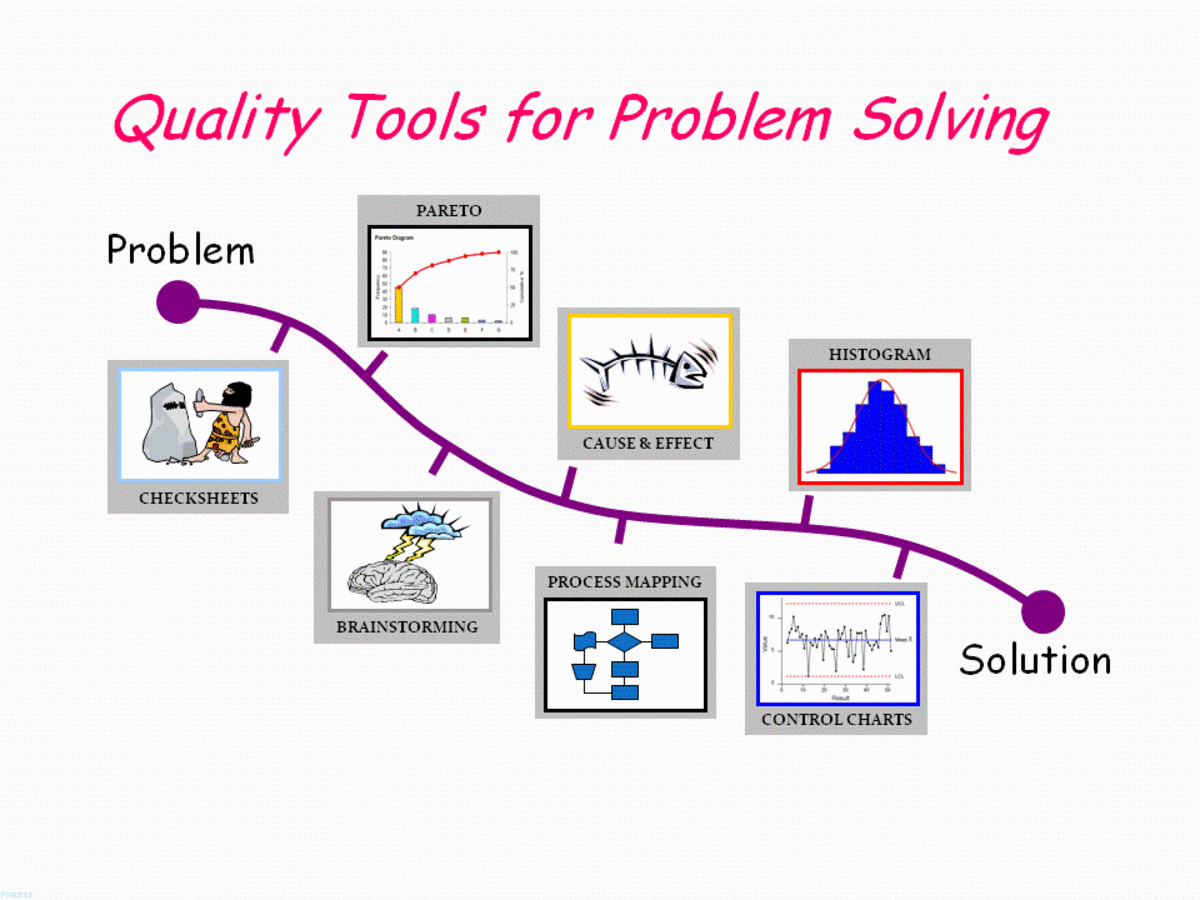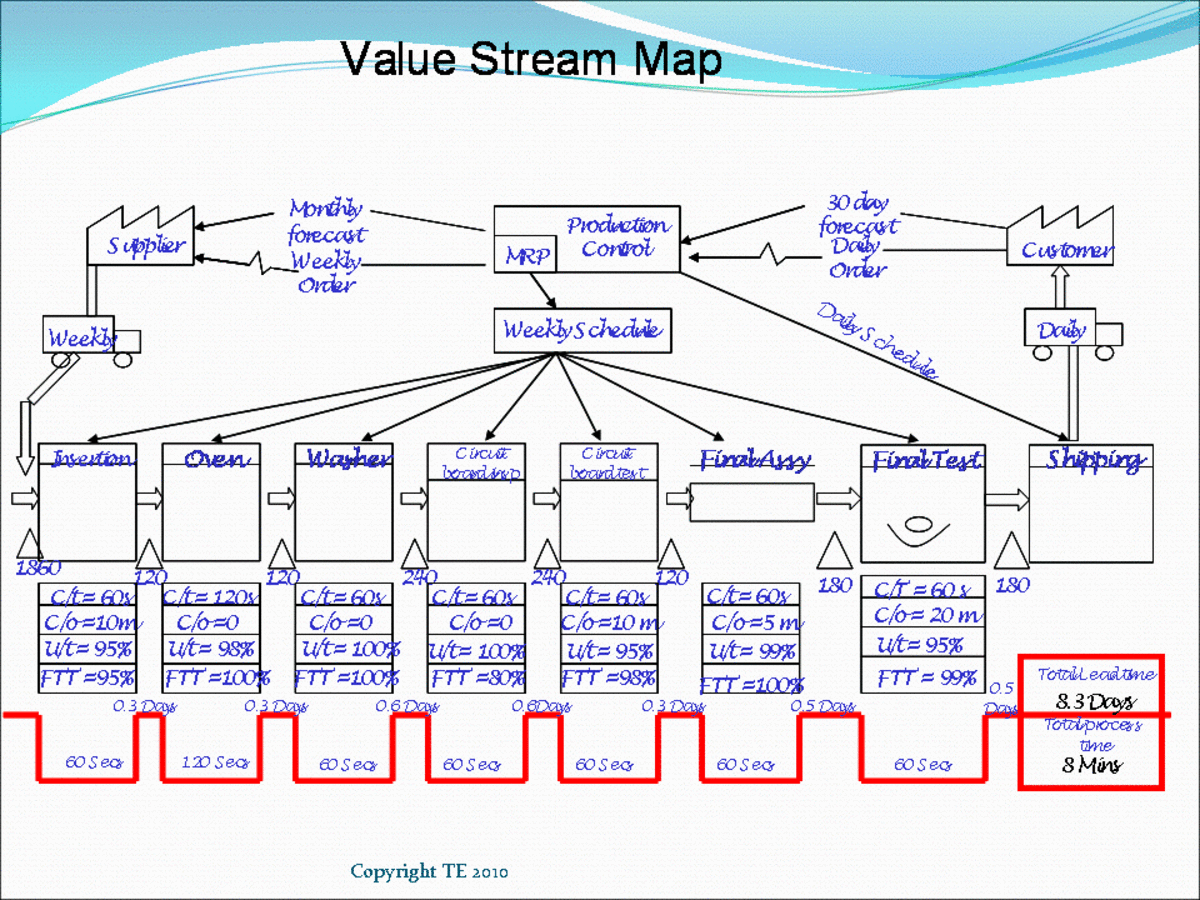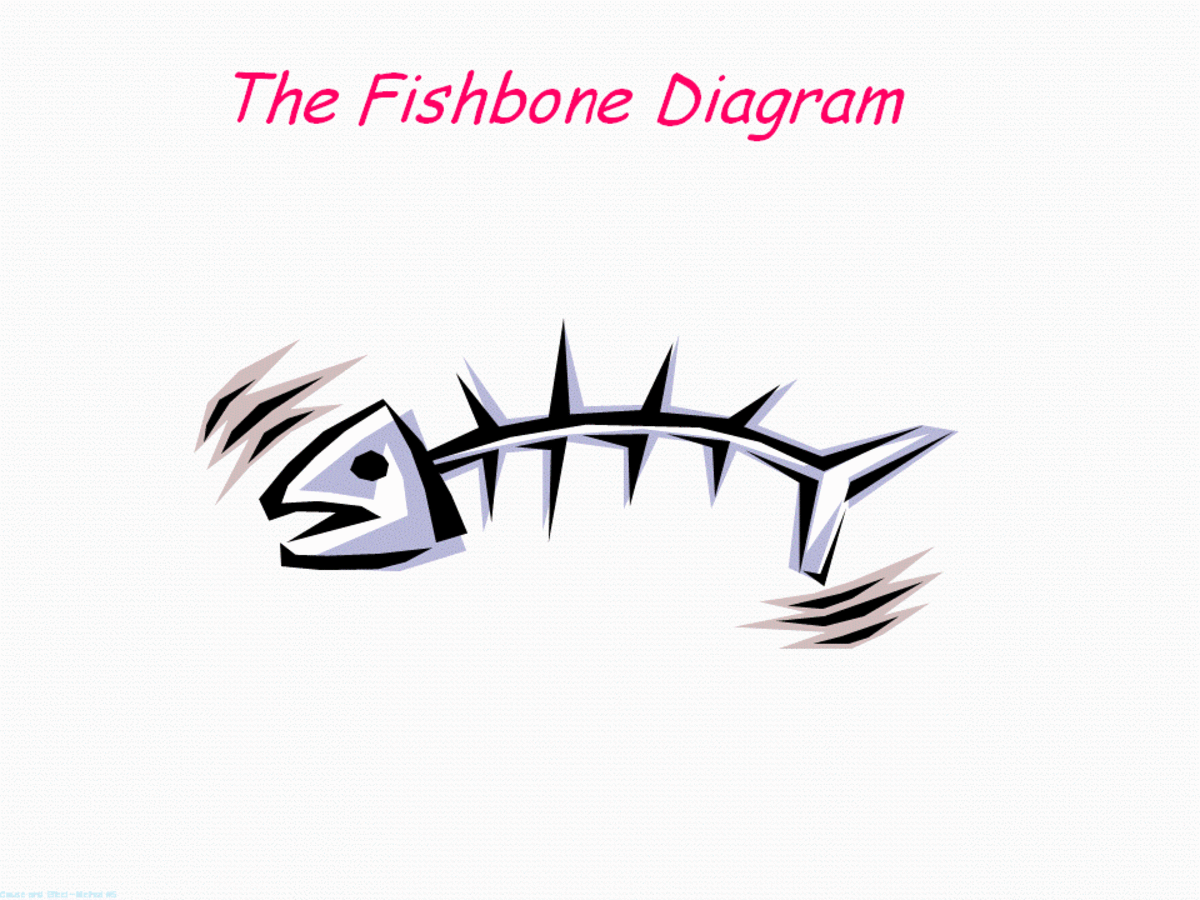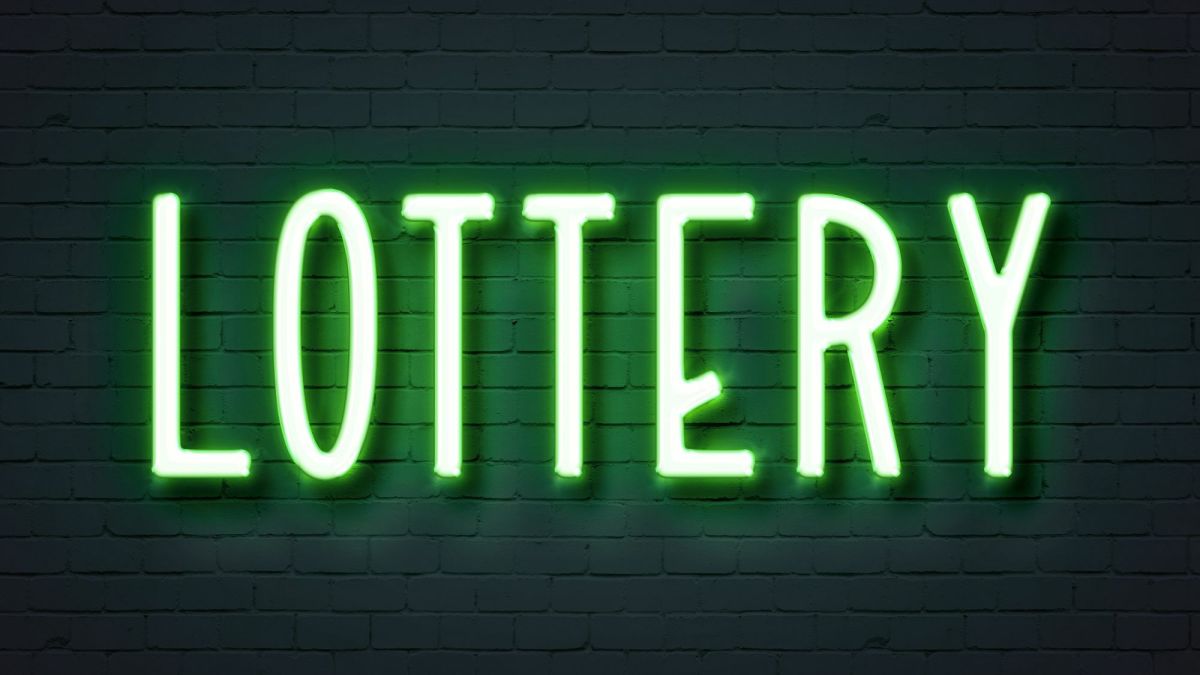What is Kaizen and does it Drive Continuous Improvement?
What is Kaizen
Kaizen is the term used within many Japanese companies such as Toyota to encompass their continuous improvement process. Meaning literally “change for the better”, kaizen is the philosophy that these companies use to stay ahead of their competition.
Kaizen is seen as being many small incremental improvements made on each and every process on a regular basis by everyone within the organization. There is no waiting for the manager or engineer to decide what improvements need to be made, EVERYONE in the organization is focused on making improvements. By everyone I mean from the CEO down to the toilet cleaner is involved within the Kaizen process.
Kaizen is about continuous improvement of every aspect of your business and expects everyone in the organization to improve the processes to improve the customer experience as well as remove the various wastes within the process which make their lives harder. Kaizen focuses on removing the muda (seven wastes), mura (unevenness) and muri (overburden) from the processes.
Involvement with Kiazen is often a significant part of a persons evaluation when it comes to gaining promotion within Japanese companies and also within many companies elsewhere that use lean manufacturing.
Continuous Improvement using Kaizen
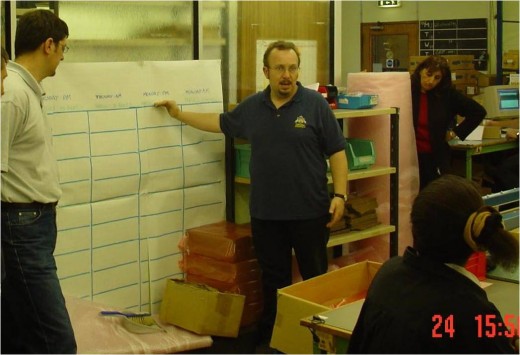
Continuous Improvement with Kaizen
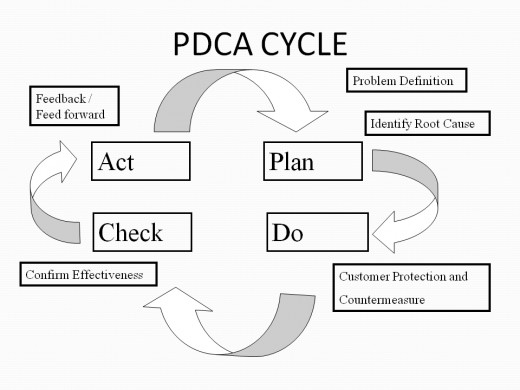
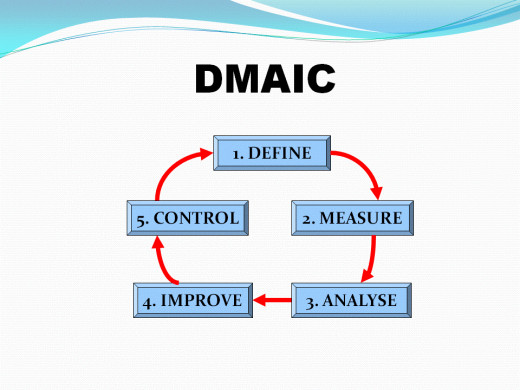
Kaizen Improvement Process
The kaizen process is very much based around the Shewhart or Deming cycle; Plan Do Check Act (PDCA Cycle). A process should first be standardized and measured to form a baseline for improvement, then the kaizen team should Plan improvements, implement them (DO), measure the impact (Check) and then re-write the standard to capture the improvement (Act) before returning back to the planning stage to create further improvements.
Kaizen and Standardization
Standardization is one of the most important parts of any Kaizen initiative, without a firm base line to start from it is almost impossible to either drive improvement or know for sure if any improvement has been made.
This is why lean tools such as 5S are so important to ensure that your work place is fully organized and your processes are documented fully enabling each process to be repeatable.
Japanese Kaizen vs Western Kaizen
The Japanese very much concentrate on the continual process of improvement using many self directed teams that work constantly to improve their workplace. In the west we tend to have problems in implementing these teams and gaining success so we tend to implement Kaizen events to drive improvements.
These Kaizen events such as a Kaizen Blitz (Kaikaku) are highly focused intensive events to try to improve a specific area of the company or the supply chain. They often result in a massive improvement over a short period of time (usually only a 5 day event), however without the discipline of the ongoing process of improvement these benefits can often evaporate over a few months or years.
These Kaizen events in the west unfortunately are also often run in response to a crisis in the business rather than as a process of continual improvement. I have run many such events at the request of companies in the UK and elsewhere and almost all were in response to a major crisis in the business that threatened jobs, profits or the whole business. Many companies having already waited too long before taking action!
Too many people work with the attitude that “if it isn’t broke, don’t fix it”, this leads to complacency and the eventual loss of business to those who do continually improve their products and services.
Kaikaku (kaizen blitzes) to gain “breakthrough” advances combined with the “more gentle” continual process of improvement practiced by many Japanese companies will ensure that these improvements are not only sustained but built upon and improved further.
Kaizen Video
Benefits of Kaizen
Kaizen requires team working, communication, openness and respect within the organization at all levels; the ownership and inclusiveness of these systems will ensure higher levels of morale which will show itself in areas such as reduced disputes, absenteeism and staff turnover.
The continuous improvement aspects of Kaizen will ensure that you eliminate the symptoms of the seven wastes of manufacturing such as waiting time, scrap and transportation; this will lead to shorter lead times, lower costs and enhanced business and profits.
Failing to continually improve your business through the implementation of Kaizen or other improvement processes will eventually ensure the decline of your business as your competitors improve to take your market share.
Kaizen Problem Solving
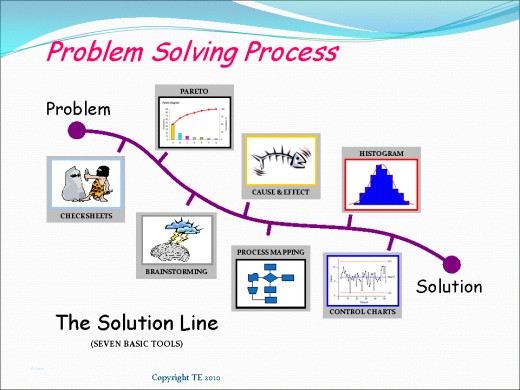
Types of Kaizen
Suggestion Schemes
These can be very successful if implemented correctly with the right culture to support it; Toyota gets many hundreds of suggestions from all its employees, most of which are implemented by those making suggestions and rewards are given. Many western schemes get few (physically possible) suggestions and often fail to support and reward the schemes so they fail to provide any benefits to the company.
Quality Circles or Self Directed Work Teams
Quality Circles were introduced to Japan after world war 2 by Deming and they have been heavily refined by the likes of Toyota ever since. Many companies have tried to introduce these teams with a variety of levels of success since the 80s in the west.
The basic idea is that the people responsible for an area form a team and are responsible for solving problems and making improvements with support from management; however it is the team that makes decisions and does the work (unless expert help is required).
These self directed work teams have to be supported and given time to meet or they will never achieve any success. Many companies in the west give attention to the initial formation of teams in a small area but then fail to support them as the idea is rolled out.
Toyota management spend time every week listening to presentations from these teams and rewarding improvements, these teams form the basis of most of their kaizen improvements.
Within Toyota there are many ways to help ensure action through these teams through various visual management techniques; these include the use of andon lights to signal problems, line stopping, display of metrics at the workplace, TPM boards, planned inventory withdrawal and many other methods.
Kaizen Blitz events
I have already mentioned the Kaizen blitz (Kaikaku) above, these kaizen events are highly focused events using a team formed specifically for the purpose of the event in hand. These events are usually focused on solving specific problems or improving specific areas.
These events should be used in addition to ongoing kaizen or they will not give you sustainable gains, and should be done on a regular basis rather than just once and forgotten.
Flow Kaizen
These events are not just limited to a specific area in the company as most people think about kaizen blitzes; we can also have kaizen events to look at the overall value stream or a portion of it, these are flow kaizen groups and work on creating future state value stream maps. Flow Kaizen is usually led by an outside facilitator (consultant) with a team formed for this specific purpose and can spend a few weeks to a few months analyzing the value stream to create improvements.
Supply Chain Kaizen
Much like Flow kaizen a supply chain kaizen team is formed with representatives of your suppliers to try to improve all aspects of your supply chain.
Who should be involved in Kaizen?
The easy answer is everybody, after all in the traditional Japanese style of kaizen everyone is responsible for making many individual small improvements to what they do and what goes on around them.
However Kaizen works best through a team approach; normally led by the team leader or supervisor the entire team in an areas should be trained in problem solving and continuous improvement techniques and meet on a regular basis to come up with and implement improvement ideas.
Management typically are tasked with meeting with the team leaders to ensure that ideas are being developed and implemented as well as having their own ideas suggested and implemented after discussion. It is usually counter productive to have management involved in leading kaizen teams as in many environments the staff will just make way for and agree to any suggestions by management and will find it difficult to challenge things.
Teams should invite personnel from other departments when required depending on what areas they are looking at, for instance they may invite maintenance crew when looking at equipment or logistics personnel when looking at their planning.
Kaizen events should involve as many of the people from the area as possible and must be led by the team leader or supervisor with the help of the consultant or facilitator. Members from other relevant areas must also be included in the team as well as some individuals with no obvious relationship to the project or area; it is surprising what can lead from a "stupid" question asked by someone who knows nothing about the area or the process.
Kaizen Training
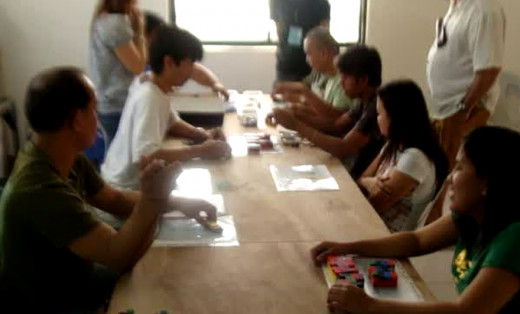
Making Kaizen Sustainable
One of the main criticisms of Kaizen, especially kaizen blitz events is that of sustainability.
We often find that improvements created through events fail to be maintained; this is often purely due to the fact that the team responsible for the area are neither trained nor supported in maintaining and building on the improvements that have been made. What then happens is that as soon as they hit a problem they revert to old more comfortable ways of working and the benefits are rapidly lost.
The same goes for other kaizen initiatives, someone in management says to set up kaizen teams in every area but they then fail to follow it through with training, support or even providing time for the meetings.
Kaizen like any other type of improvement must have support and leadership from the management of the company. The workforce must be trained, time must be allocated, and focus must be maintained throughout the management of the company.
Does Kaizen Really Work?
Having worked in companies where Kaizen is expected and supported I can honestly say that Kaizen can be highly effective as both an ongoing process and as blitz events.
I have been involved in and led many events that have made significant changes to companies, reducing lead times from weeks to just a few days or even hours through to doubling or more the productivity of an area. The improvements that you can make are only limited by the ambition of the team members.
However I have also seen kaizen implementations that achieve very little due to the lack of support and attention that is provided by the management of the company. Also blitzes that have achieved a huge amount that have then regressed rapidly back to how they were again due to lack of training and support. Any kaizen initiative must have the full ongoing support of everyone if it is to succeed.
Kaizen and Continuous Improvement
If you have any comments or would like to ask any questions about Kaizen and continuous improvement or Lean Manufacturing in general; please leave it in the area below and I will respond as soon as I am able


